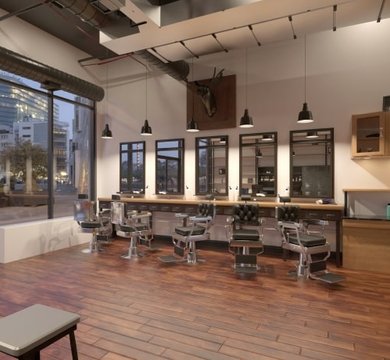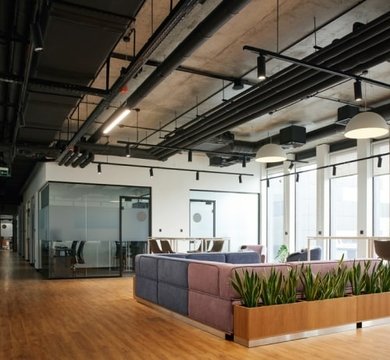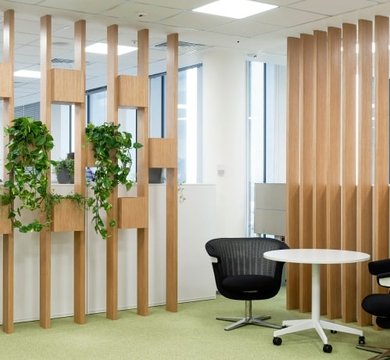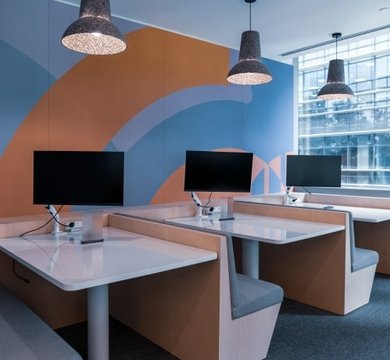From expansion and restructuring to mergers and the pursuit of a different style of operation, there are a host of reasons why a company may need to move offices. Just like moving home, packing up and resettling somewhere else can present logistical challenges.
In fact, moving multiple people, possessions, equipment and IT infrastructure is probably one of the most involved exercises a business will ever undertake, so an office relocation checklist is essential. Having helped many companies with their relocation plans, MPL has created this checklist for office relocation to get your planning off to a great start.
1. Consider Business & Office Needs
What should be included in a moving checklist? Before you even look at an alternative premise, a company needs to be clear on its future plans, assess how it wants to interact with clients, decide whether it wants to change operational style, and draw up a ‘wish list’ of elements that may help with staff retention and recruitment. Put a tick next to each of these elements on our office relocation checklist once they have been discussed:
Future Business Plans:
What to consider for office relocation? Accommodating the here and now can be a false economy, so projecting forwards should be part of your strategy. If your company is on an aggressive acquisition and mergers trail, plans to increase turnover or recruit more staff, a new office will need to accommodate extra personnel and all the equipment they may need.
Not all office moves are a reaction to growth, however. Those downsizing or pursuing a new style of operation may also need to move. Many of MPL’s office refurbishments London and across England involve smarter space planning, resulting in a company renting a smaller premises at a better rate but still accommodating the same number of people. Some of our clients move their businesses to a High Street setting and therefore need retail fitouts.
We also work closely with companies who are adapting to new working patterns and styles – hybrid, agile, open plan, activity based, remote and part-remote. In these cases, it may be the location – as well as the size – of a building that drives the change.
Client Needs:
A business that entertains lots of clients or hosts networking events will need to pay particular attention to the style and design of the office. A relocation can allow bespoke spaces to be created – seminar theatres, in-office cafés and bars, and large-capacity boardrooms, for example.
Sometimes, an office move is motivated by the need for a new location. Perhaps the client base is largely international and it makes better sense to relocate closer to an airport, or maybe a business would attract new clients if it moved to an emerging business district.
MPL’s interior office designers are often drafted in during the relocation phase to create a new workplace where the design matches the aspirations of the business. Ask yourself: do you want more visible branding, a better reflection of corporate colours, more prominent external signage or an impressive reception? A relocation can facilitate all of these.
Talent Acquisition & Retention:
What your office looks like inside and the experience it delivers is vital when it comes to keeping existing staff and attracting new employees. A relocation is the chance to reshape a business’s direction and ethos for the better. This will make current employees feel valued, turn the heads of those who might be tempted to work there and transform your business into a brand leader.
Productivity & Wellbeing:
Employee satisfaction surveys repeatedly show the conditions in which people work have a direct impact on their productivity and wellbeing. Primary aspects including personal space, natural light, ambient temperature and air quality are important during the working day, both psychologically and physically. Secondary aspects - co-working spaces, break out areas, kitchens, gyms and social hubs - will help teams gel, foster collaboration and allow employees to nurture their health. Conduct a survey among employees to see what they’d like improved or introduced in their next office.
2. Planning and Preparation
Failing to prepare is preparing to fail – a saying that is especially true when relocating offices. This office relocation checklist will help keep your move on track. When planning, ensure you:
Assign a Relocation Team:
It’s no good having a checklist for office relocation if nobody is ticking off the tasks. As soon as the idea to relocate is discussed, a relocation manager – or a team if it’s a large company – should be appointed. If the move is complex, the logistics of a relocation may become their sole focus as they’ll need to mediate with internal and external partners.
Set a Budget:
Costs attached to relocating broadly fall into three camps: the cost to exit the current property; the cost to rent/purchase and refit a new office, and the cost to physically move from one location to another.
If you own a premises, think about: the fee paid to an agent to sell a premises, legal fees, the cost of repairing, redecorating and cleaning the premises before it goes on the market, any value depreciation, post redirection and security fees if the building is left vacant.
If you rent a property, think about: any costs associated with exiting a lease agreement early, the cost of subletting the property, if required, cleaning, and the expense of returning the premises back to its original state.
When finding a new premises, consider: the monthly rent or finance repayments, services charges, any ground rent, utility costs, insurance, the cost to renovate or reconfigure the space, costs associated with new business address notifications and fees charged to connect essential services.
When planning the actual move, consider: professional removal fees, moving insurance, lost work days and storage.
Create a Timeline:
- Your office relocation timeline will depend on:
- The size of the office you’re moving from
- The distance between the two locations
- How big your teams are
- How much equipment and furniture there is
- Access arrangements at both locations
Generally, the bigger, further and greater the move, the longer a relocation will take. Start with a deadline that you want to be moved by and work backwards, noting that the planning process should start 6 to 12 months before you want to move. Factor in time to:
- Establish how long is left on the current lease and negotiate an early exit, if required – allow 4-8 weeks
- Conduct employee, equipment, furniture and stationary audits – 2-3 weeks
- Research new areas and removal companies – 2-4 weeks
- Find a new premises – 6-8 weeks
- Exchange contracts/sign a new lease agreement – 2-8 weeks
- Undertake any refit, repair or renovation works at both premises – 4-16 weeks
- Pack up the contents of the old office and unpack at the new location – 1-4 weeks
Choose a Suitable Location:
Relocating becomes a very plausible option when an office is set too far away from public transport - your office relocation checklist should include conducting a travel survey, which asks where employees live, how long their commute is and whether they are happy with their current travel arrangements.
3. Office Space and Design
The way we plan and design offices has changed radically in the last 10 years, so it’s worth going into the relocation process knowing what’s possible in a new building and how it can revolutionise your business.
Space Planning:
A thorough assessment of the space available in a new office is critical and should be performed before an offer is made. MPL can conduct a site survey as part of your relocation research phase, advising on how the space could be optimised and laid out to suit your desired business objectives.
Interior Design and Layout:
The aesthetics and layout of an office are directly linked to wellbeing and productivity, so our input places emphasis on light, colour, layout and interior style. Before any deal is done, it is essential to work out whether the desired style of working can be achieved and if all the amenities required can be created.
Furniture and Equipment:
An office relocation is an excellent time to complete a current furniture and equipment inventory. Knowing what you currently have, what condition it’s in and whether it’s being used will not only help you with removal costs but will also inform your new office furniture and equipment budget.
4. IT and Technology Infrastructure
In a world where we rely on the internet, cloud storage, servers and connections, turning everything off for a prolonged period of time simply isn’t possible. Those in charge of relocating will need to work closely with IT managers and technology suppliers.
Communications and Connectivity:
Early conversations with IT and technology teams will ensure no data is lost and the business is not offline during the move. Ensure you cover aspects including internet/broadband connections, phone systems and conferencing facilities.
IT Equipment and Servers:
As well as connectivity, plan for the safe disconnection and packing up of IT equipment and servers. You’ll need to timetable this so staff have access to IT for as long as possible before the move and that there’s a system in place to reconnect upon arrival at the new office. You may also like to facilitate working from home during the move itself.
Data Backup and Security:
Unplugging and disconnecting can leave a company’s IT infrastructure vulnerable, so plan how data will be backed up, stored and accessed during the relocation process. Also plan to make IT security and safety a priority during the relocation and once moved.
5. Legal and Regulatory Compliance
Who to tell that you’re moving office is an office relocation checklist within a checklist, and communicating your office move should be done as soon as your new address has been confirmed – and sometimes in advance. It will help to create a ‘change of business’ address letter template that you can post or email to the relevant people, which include:
Notify Relevant Authorities & Organisations:
Tax offices, business registration agencies, licensing authorities, regulators, banks, pension providers, tax advisors, accountants, insurance providers and legal advisors
Update Business Licences and Permits:
Organisations that issues business licences and permits
Inform Clients, Partners, and Suppliers:
Clients, partners, stakeholders and service suppliers (including utilities and communication suppliers).
Print and Digital Touchpoints:
Social media accounts, websites, directory listings, business cards, stationery and advertising.
6. Logistics and Moving
MPL’s checklist for office relocation will help make the mammoth task of actually moving everything more manageable.
Engage Professional Movers:
Start researching removal companies that specialise in office relocations. Pay attention to whether they belong to any trade associations, have good online reviews, have suitable insurance and have a history of moving a company of your size with similar equipment.
Pack and Label Items:
If your removal company is not packing on your behalf, consider using plastic crates instead of cardboard boxes when you pack. Pack non essentials in advance and everyday items last. Label each item with the room or space it is destined for or create a colour coding system. Staff should be asked to pack up their own desk and take personal effects home with them.
Coordinate with Building Management:
Moving can be disruptive so liaise with building managers and neighbours at both the current office and your new workplace. Bear in mind access to lifts, the width of doorways and parking.
7. Employee Communication and Support
Not everyone is great with change so keep shocks to a minimum, channels of communication open and HR support readily available. Ensure you:
Communicate with staff early:
Your staff should be the first group of people to know you intend on moving and an announcement is best made by the business owners, rather than heard at the watercooler. An early announcement gives staff the chance to be involved, understand the benefits or plan for an alternative in good time, should the relocation not suit them.
Provide Relocation Support:
The level of support you’ll need to offer will depend on the distance between the two offices. If employees need to change their commute drastically, a company will need to prepare a support package and perhaps brace for resignations. A relocation support package can include orientation services, temporary accommodation assistance, help with finding a new permanent residence and supporting families whose children will need to move school.
Plan for Business Continuity:
Any business that operates a customer-facing element or receives a large volume of visitors will need to plan for instances when the office is out of action. MPL has set up temporary premises for companies during the relocation and refitting process, so there’s always somewhere to work. We can also schedule renovations and redecoration outside of opening hours.
Summary
Our office relocation checklist is a great place to start if your biggest question is what to consider for office relocation? Our list of planning, practical and physical tasks should make the move from one workplace to the other a smooth process. As well as ‘making good’ an existing property, we can create a space plan and interior design for a new workplace, as well as offer clients retail designs. Please get in touch with MPL to start a relocation and refurbishment programme.













